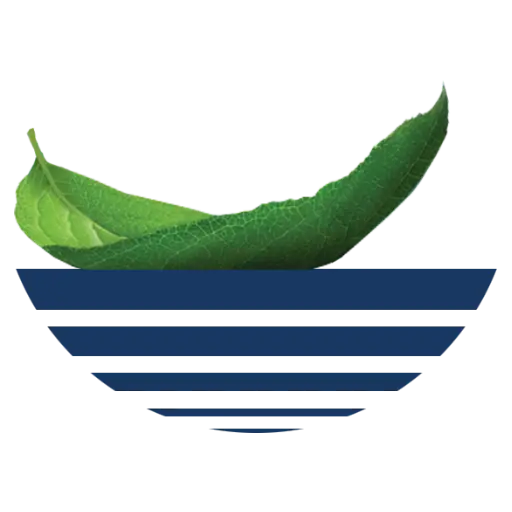
SCR Catalyst for Your Ship
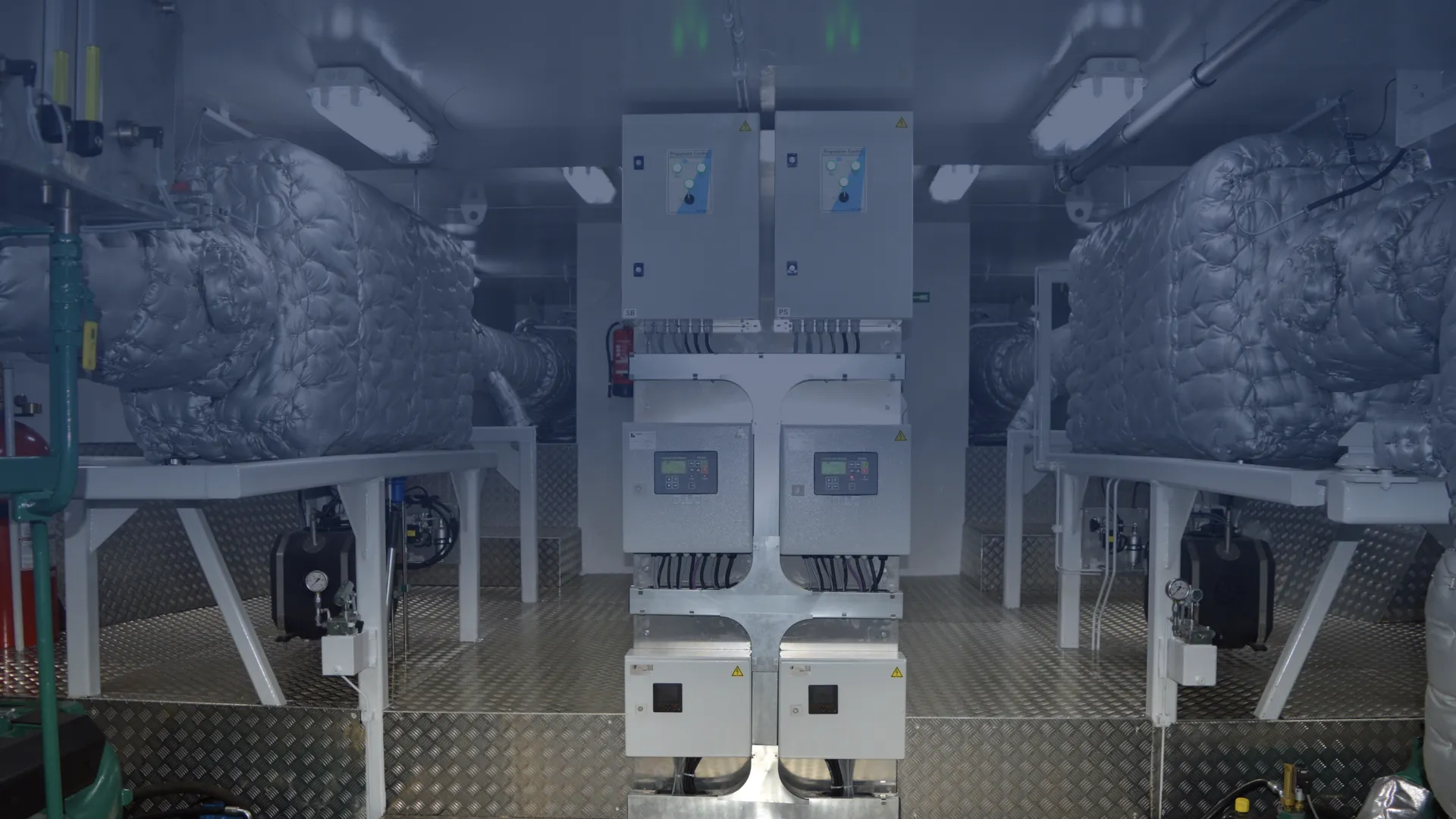
The Green Deal for inland and maritime shipping is entirely focused on reducing harmful environmental emissions, including nitrogen (NOx) emissions. This agreement not only serves as a driving force behind emission reduction but also marks a noticeable trend where ports, carriers, charterers, and contractors are increasingly choosing cleaner ships. Selective Catalytic Reduction, commonly known as SCR, is a widely accepted technology for reducing nitrogen emissions. Discover our partner’s SCR catalyst, suitable for both existing and new ship designs.
SCR Catalyst for Your Ship
Discover the SCR catalyst from our partner, suitable for both existing and new ship designs.
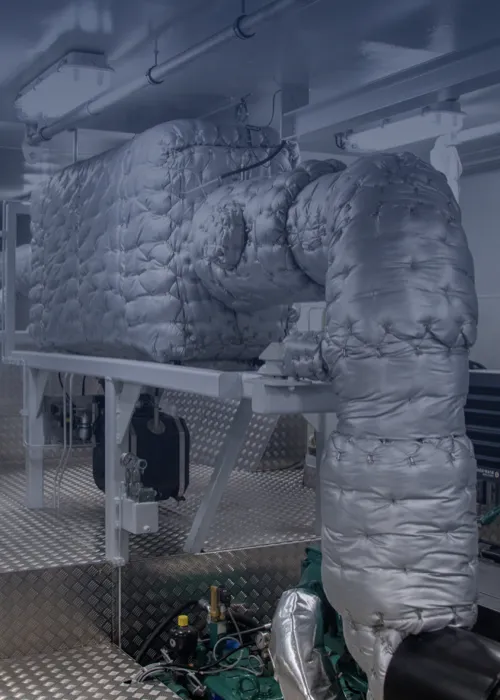
Technology
When fuel and air are mixed and combusted in an engine, exhaust gases are produced that contain various pollutants, including harmful nitrogen oxides (NOx). Learn more about the processes underlying Selective Catalytic Reduction (SCR) technology to reduce a ship’s NOx emissions.
Properties
Whether your engine is non-compliant (pre-CCR), CCR-1, or CCR-2, each SCR catalyst is custom-designed to seamlessly integrate with your specific engines, vessel type, user profile, and available space in the engine room.
These SCR catalysts reduce nitrogen oxides (NOx) emissions by up to 98%, allowing you to easily meet the emission limits of IMO Tier III and EU Stage V.
The design and manufacturing take place in Germany, utilizing high-quality materials, and the housing is engineered for effortless maintenance.
The SCR catalysts are suitable for ships with engine power ranging from 19 to 10,000 kW.
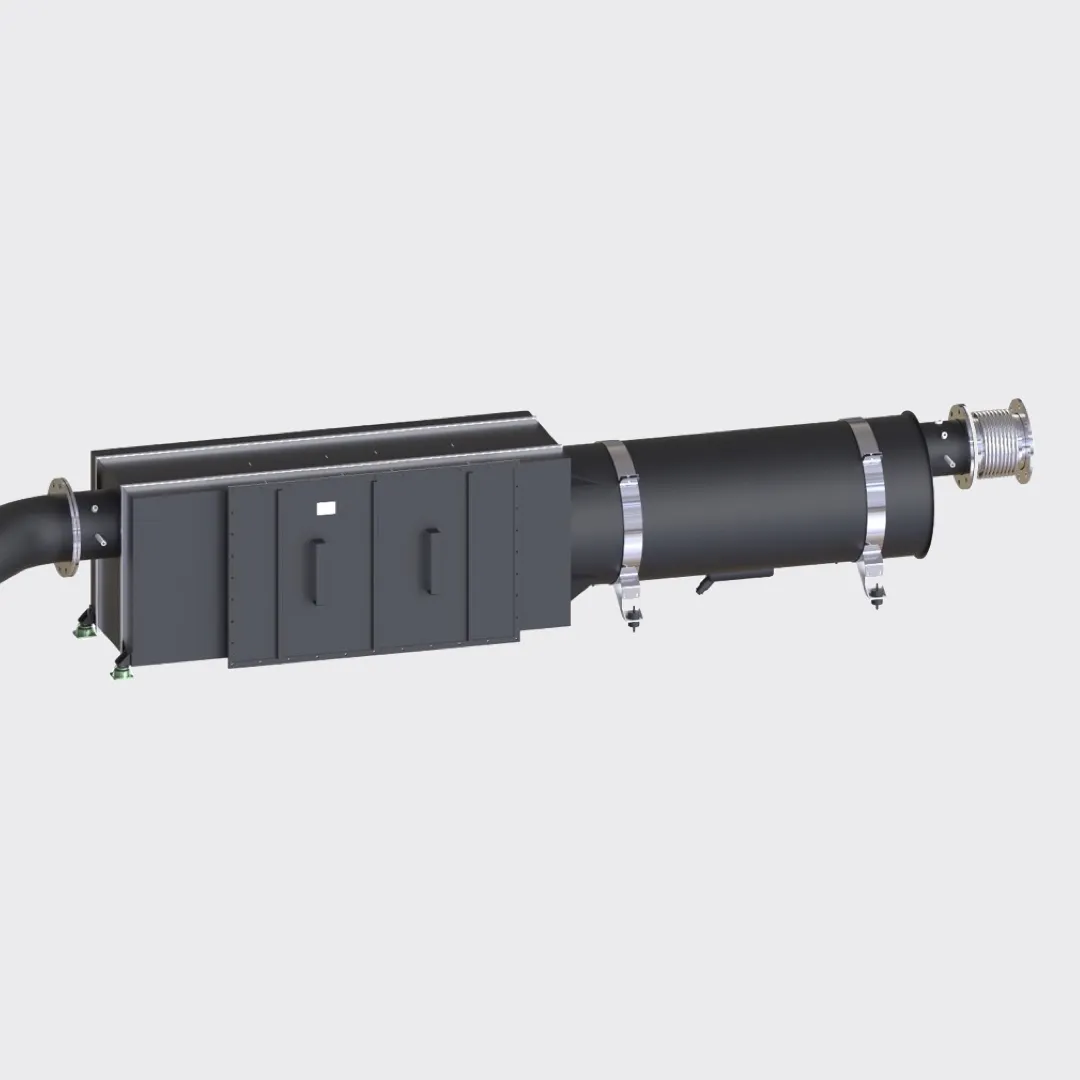
Inland Shipping
Thanks to the Inland Shipping Emission Performance Label, shipping companies and shipowners active in inland shipping can now also receive recognition for “old” non-compliant engines (pre-CCR), CCR1, and CCR2 engines.
This means that it is no longer necessary to only consider new Stage V-certified engines to stay up to date. Instead, you can now also be rewarded by ports, carriers, and banks for installing exhaust gas aftertreatment by measuring emissions in practice.
However, if you want to achieve the Stage V emission limit values with your non-certified Stage V engines, in many cases, you also need to install a diesel particulate filter alongside an SCR catalyst. This is necessary to bring the emissions of particulate matter (PM) and the number of solid particles (PN) to Stage V levels.
Maritime Shipping
Since January 1, 2016, the IMO Tier III emission requirements have been in effect for the Nitrogen Oxide Emission Control Areas (NECA), aimed at reducing nitrogen (NOx) emissions from maritime shipping. In addition to the coast of North America and the Caribbean islands, as of January 1, 2021, the North Sea and Baltic Sea have also been designated as NECA areas.
While the IMO Tier III regulations are solely focused on reducing nitrogen emissions on ships and not on reducing particulate matter emissions, we observe that an increasing number of shipping companies in maritime shipping choose to reduce particulate matter (PM) emissions with a diesel particulate filter to the level of Stage V. Especially shipping companies with vessels engaged in contracting apply this method because they need to meet increasingly stringent environmental requirements beyond legal obligations.
In Practice
As a practical example, a shipping company decided to modernize its 1964 crane vessel by incorporating an SCR catalyst. These efforts resulted in a long-term contract with the Port of Rotterdam, winning a Green Award, and gaining recognition as a leading player in sustainability.
Another shipping company demonstrated its commitment to addressing nitrogen oxide issues by outfitting a new and innovative barge ship with an SCR catalyst.
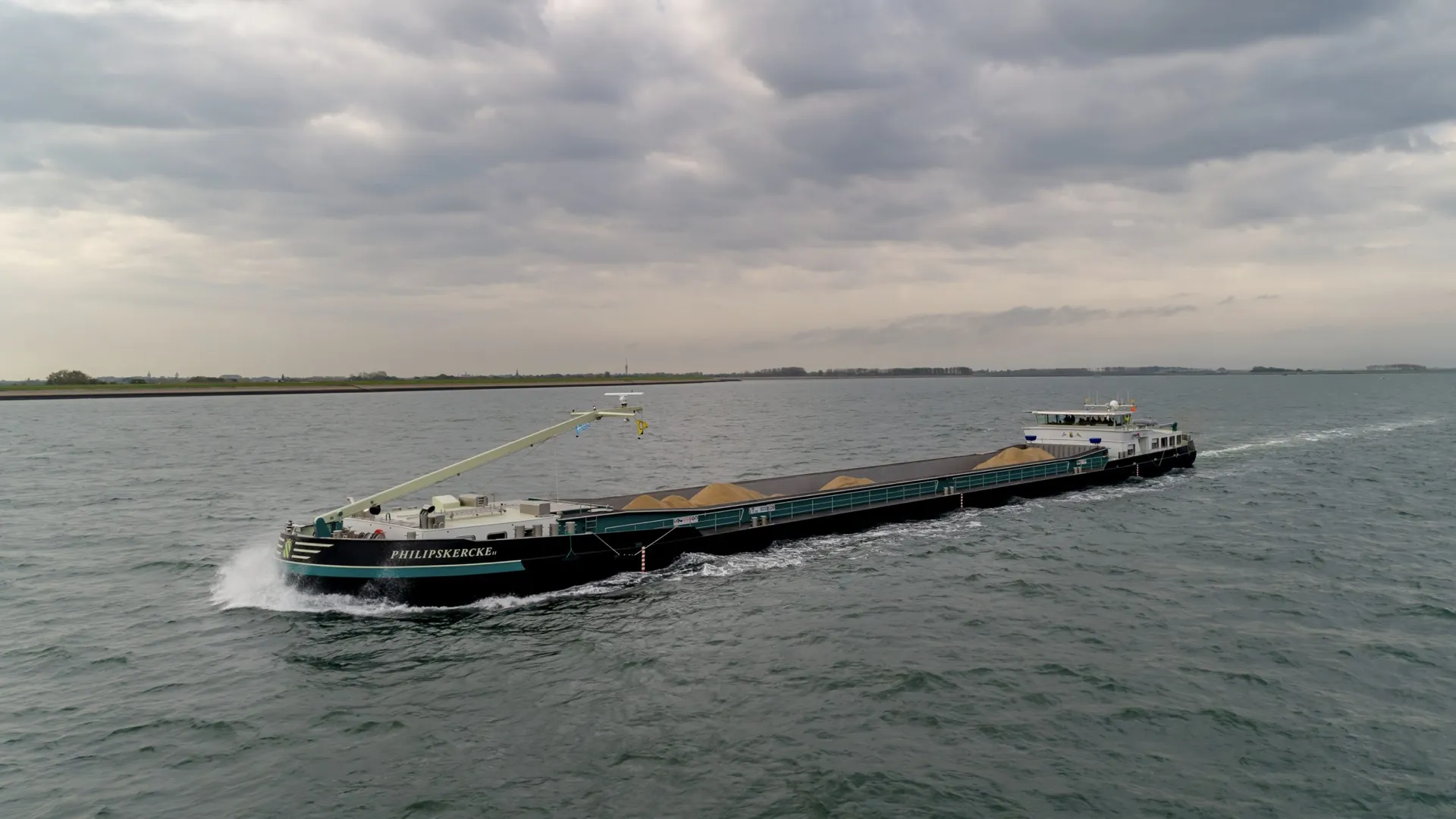
Technology
When fuel and air are mixed and combusted in an engine, exhaust gases are produced that contain various pollutants, including harmful nitrogen oxides (NOx). Learn more about the processes underlying Selective Catalytic Reduction (SCR) technology to reduce a ship’s NOx emissions.
Properties
Whether your engine is non-compliant (pre-CCR), CCR-1, or CCR-2, each SCR catalyst is custom-designed to seamlessly integrate with your specific engines, vessel type, user profile, and available space in the engine room. These SCR catalysts reduce nitrogen oxides (NOx) emissions by up to 98%, allowing you to easily meet the emission limits of IMO Tier III and EU Stage V. The design and manufacturing take place in Germany, utilizing high-quality materials, and the housing is engineered for effortless maintenance. The SCR catalysts are suitable for ships with engine power ranging from 19 to 10,000 kW.

Inland Shipping
Thanks to the Inland Shipping Emission Performance Label, shipping companies and shipowners active in inland shipping can now also receive recognition for “old” non-compliant engines (pre-CCR), CCR1, and CCR2 engines.
This means that it is no longer necessary to only consider new Stage V-certified engines to stay up to date. Instead, you can now also be rewarded by ports, carriers, and banks for installing exhaust gas aftertreatment by measuring emissions in practice.
However, if you want to achieve the Stage V emission limit values with your non-certified Stage V engines, in many cases, you also need to install a diesel particulate filter alongside an SCR catalyst. This is necessary to bring the emissions of particulate matter (PM) and the number of solid particles (PN) to Stage V levels.
Maritime Shipping
Since January 1, 2016, the IMO Tier III emission requirements have been in effect for the Nitrogen Oxide Emission Control Areas (NECA), aimed at reducing nitrogen (NOx) emissions from maritime shipping. In addition to the coast of North America and the Caribbean islands, as of January 1, 2021, the North Sea and Baltic Sea have also been designated as NECA areas.
While the IMO Tier III regulations are solely focused on reducing nitrogen emissions on ships and not on reducing particulate matter emissions, we observe that an increasing number of shipping companies in maritime shipping choose to reduce particulate matter (PM) emissions with a diesel particulate filter to the level of Stage V. Especially shipping companies with vessels engaged in contracting apply this method because they need to meet increasingly stringent environmental requirements beyond legal obligations.
In Practice
As a practical example, a shipping company decided to modernize its 1964 crane vessel by incorporating an SCR catalyst. These efforts resulted in a long-term contract with the Port of Rotterdam, winning a Green Award, and gaining recognition as a leading player in sustainability. Another shipping company demonstrated its commitment to addressing nitrogen oxide issues by outfitting a new and innovative barge ship with an SCR catalyst.

Frequently Asked Questions
Which types of vessels is this SCR catalyst suitable for?
Each SCR catalyst is custom-designed to serve a wide range of vessel types across various sectors. Whether it’s ships in the seagoing shipping, coastal shipping, cruise industry, fast ferries, offshore, inland shipping, dredging, fishing, naval vessels, or megayacht construction, this system is suitable for both new and existing vessels with engine power up to 10,000 kW.
Determining the suitability of this technology for your specific vessel requires consideration of several factors. While the emphasis is on designing SCR catalysts that fit into the most confined engine rooms, a feasibility study is essential. This involves not only assessing whether the catalyst fits with all the pipes, but also whether emission limit values such as IMO Tier III and EU Stage V can be achieved, with or without a thermal management system such as a burner.
Can this SCR catalyst further reduce NOx emissions beyond what is required by IMO Tier III and EU Stage V?
Absolutely, with this SCR catalyst, you can not only meet the emission limit values of IMO Tier III and EU Stage V, but you can also further reduce the NOx emissions of your (existing) vessel. In certain cases, for example, it is possible to bring nitrogen oxide emissions back to the level of Euro 6. This certainly gives you an advantage in tenders.
Can I get a subsidy for this SCR catalyst?
You may be eligible for a subsidy for an SCR catalyst, depending on its availability. At the time of writing, for example, you can participate in the Temporary subsidy scheme for sustainable inland navigation vessels. This scheme is specifically designed for shipowners and shipping companies with existing inland shipping vessels and engines on board.
Additionally, you may qualify for the Environmental Investment Allowance (MIA) and the Random Depreciation of Environmental Investment Scheme (Vamil).
